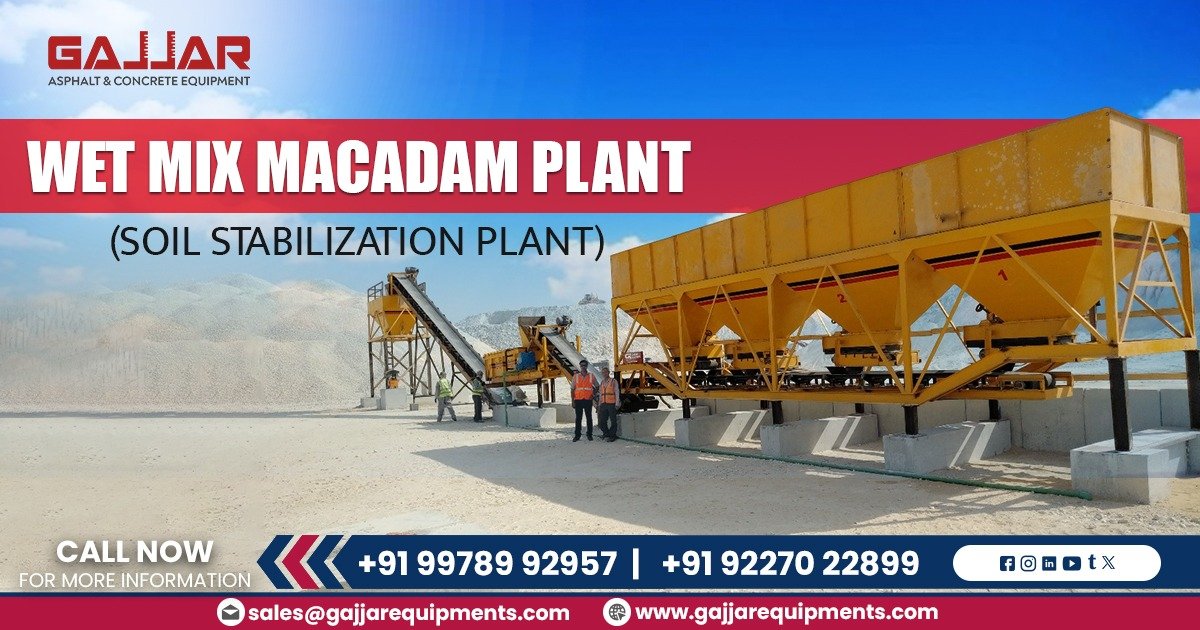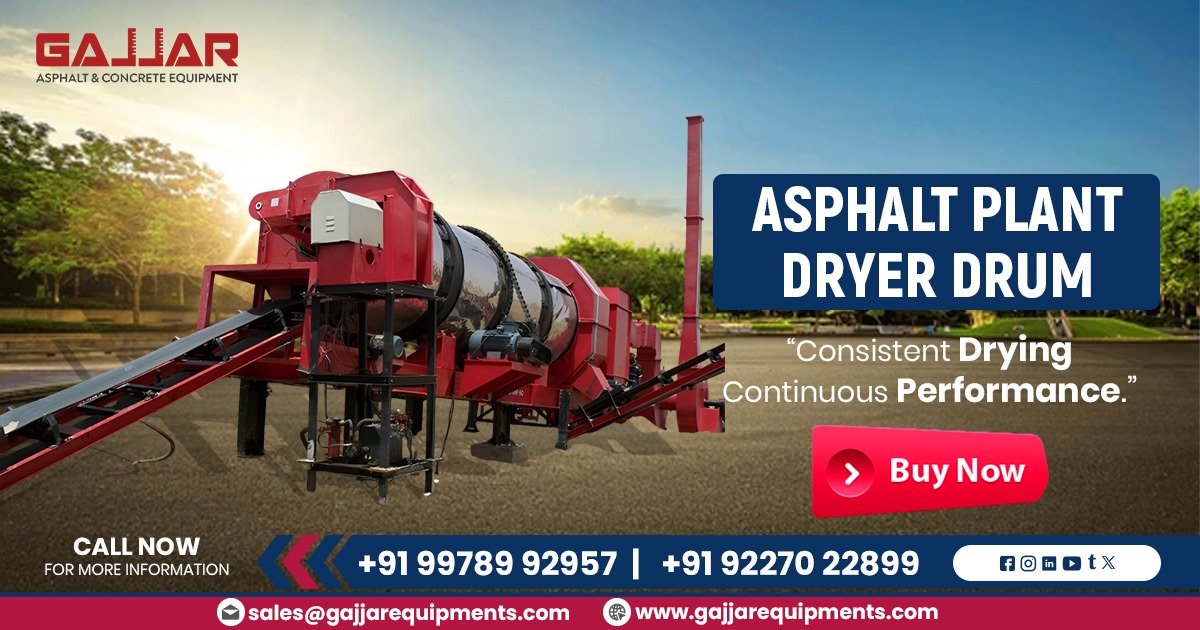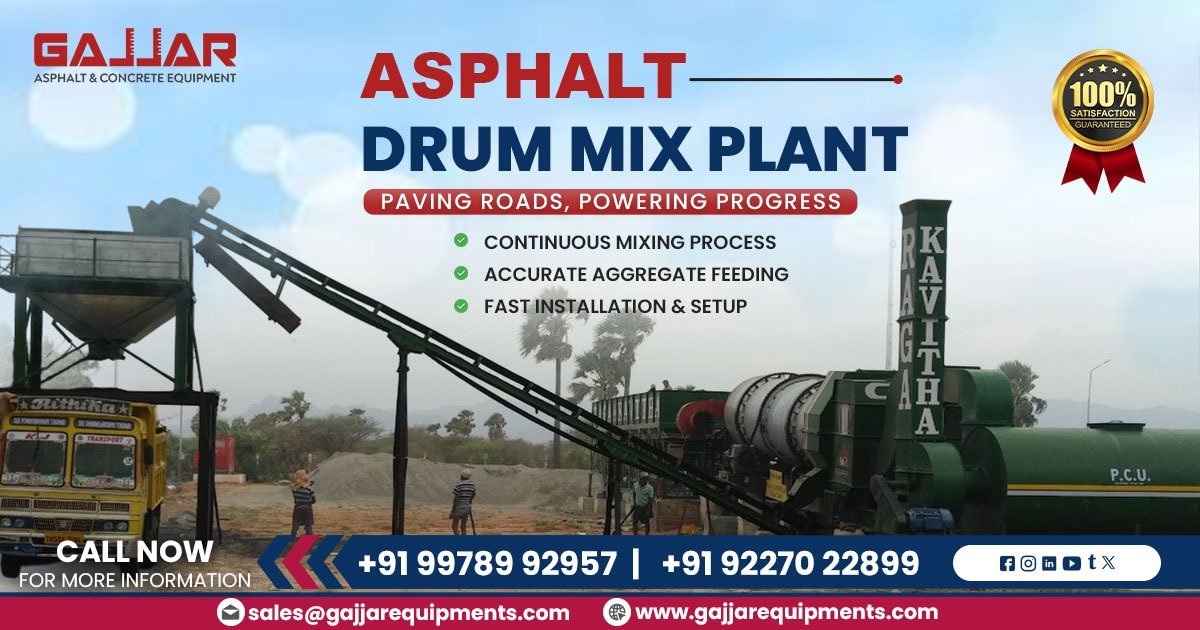Gajjar Equipments Private Limited
ASPHALT MATERIAL
Asphalt pavement material, or bituminous pavement material, consists of asphalt binder and aggregates like sand, gravel, and crushed stone. The binder, a petroleum by-product, glues the aggregates together, creating a durable, flexible surface that withstands heavy loads and resists water. Widely used for roads, highways, parking lots, and runways due to its smooth finish and easy maintenance. Perfect for infrastructure projects.
TYPES OF ASPHALT MIXING PLANTS
Asphalt Hot Mix Plants and Asphalt Cold Mix Plants are two distinct types of facilities used to produce asphalt, differentiated primarily by the temperature at which the material is processed. Nowadays, both types of plants come in stationary and mobile variants.
- ASPHALT HOT MIX PLANTS: These plants produce hot mix asphalt (HMA) by heating aggregates (gravel, sand, crushed rock) to high temperatures (around 150-180°C) and then mixing them with hot bitumen. The process ensures that the asphalt is thoroughly coated and achieves the desired consistency. This type of plants is ideal for large-scale road construction, highways, airports, and other infrastructure projects. HMA is known for its durability and ability to withstand heavy traffic loads.
Asphalt Hot Mix Plants are further categorized by their mixing processes, each offering unique advantages and suited for specific project requirements:
- 1 Asphalt Batch Mix Plants: Asphalt Batch Mix Plants produce asphalt in separate batches. The aggregates are heated and stored in individual bins before being measured and mixed with bitumen and filler materials in a pug mill mixer. Each batch can be customized to meet specific requirements, making this type of plant ideal for projects that require different mix designs or frequent changes in the mix. Click Here for more details.
- 2 Asphalt Drum Mix Plants: Asphalt Drum Mix Plants produce asphalt continuously, so these plants are also known as continuous mix plants. In these plants, the aggregates and bitumen are mixed in a rotating drum. The drum serves both as a dryer and a mixer, heating the aggregates and mixing them with bitumen in a continuous process. Drum mix plants are highly efficient, making them suitable for large-scale projects with consistent mix designs.
Asphalt Drum Mix Plants are further categorized based on the setup and flow of materials within the drum.
1.2.1 Parallel Flow Drum Mix Plants: In parallel flow drum mix plants, the aggregates and bitumen flow in the same direction through the drum. The burner is placed at the lower end of the drum, and the materials move from the higher end to the lower end. This setup allows the aggregates to be heated efficiently as they mix with the bitumen, resulting in a consistent and uniform mix. These plants are known for their simplicity and ease of operation. Click Here for more details.
1.2.2 Counter Flow Drum Mix Plants: Counter flow drum mix plants feature a design where the aggregates and bitumen move in opposite directions. The burner is located at the lower end, and the aggregates move from the higher end to the lower end, while the bitumen flows from the lower end to the higher end. This setup provides better control over emissions and enhances the heat transfer efficiency, resulting in higher-quality asphalt. It also helps in reducing the energy consumption of the plant. Click Here for more details.
1.2.3 Double Drum Mix Plants / Duo Drum Mix Plants: Double drum mix plants combine both parallel and counter flow principles. They have an inner and outer drum. The aggregates are dried in the inner drum where the hot gases flow in the opposite direction to the aggregates (counter flow). After drying, the aggregates are transferred to the outer drum where they are mixed with bitumen in a parallel flow manner. This design improves the quality of the mix and increases production efficiency, making it suitable for large-scale projects. Click Here for more details.
1.2.4 Continuous Mix Plants with Pugmill: Continuous mix plants, although similar to drum mix plants, use a pugmill mixer for combining the aggregates and bitumen. Continuous mix plants with pugmill mixers are essential for projects that demand high efficiency and consistent quality. They provide a seamless solution for large-scale asphalt production, ensuring that the mix meets the required specifications throughout the project.
2. ASPHALT COLD MIX PLANTS: These plants produce cold mix asphalt (CMA) by mixing aggregates with emulsified or cutback bitumen at ambient temperatures. This type of asphalt does not require heating, which makes the production process simpler and more energy-efficient. This type of plants is suitable for patching, minor repairs, and road maintenance, especially in colder regions where hot mix plants may not be feasible. Cold mix asphalt is often used in low-traffic areas and temporary road surfaces.
These various setups cater to different project needs, from simple operations to high-efficiency production and superior mix quality. Understanding these categories helps in selecting the right type of plant for specific project requirements.
Let us know if you need our expert advice on selecting the best suitable Asphalt Mixing Plant for your upcoming projects.








